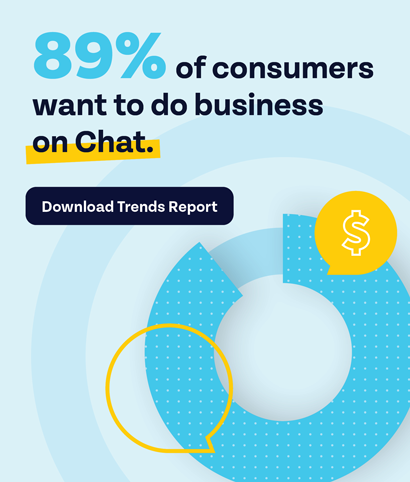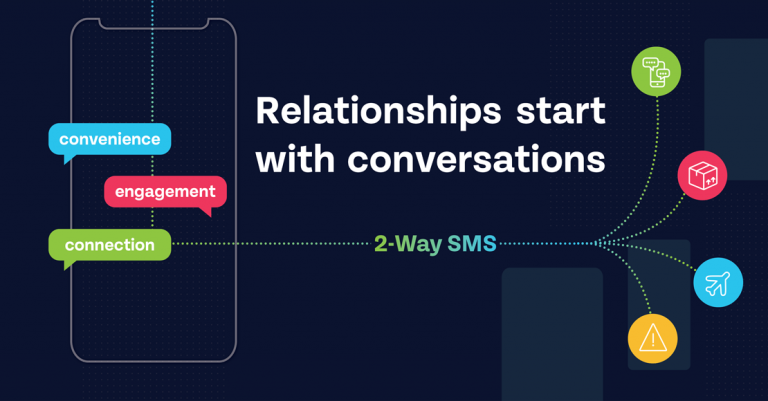
Companies need to explore as many ways as possible to reach their customers. As your emails get sent to the trash by spam blockers and your legitimate phone calls get labeled as robocalls by call blockers, SMS mobile marketing offers a better way for you to get messages to your target audience.
You can expect SMS mobile marketing’s popularity to grow in the coming years. As of 2019, 81 percent of U.S. adults own smartphones. Also, the number of mobile device accounts has outgrown the number of landline accounts around the world.
Before you invest in SMS mobile marketing, you should learn more about rules regulating the practice and how you can expect campaigns to benefit your business.
SMS Messaging
SMS stands for “short message service.” People send and receive SMS messages every day. When you text someone, asking them to pick up dinner on their way home, you sent an SMS message. When you text someone a website link to a story you think they will like, you just sent an SMS message.
For the most part, SMS messaging is the same thing as texting. SMS mobile marketing targets customers by sending them text messages about topics like:
Upcoming sales that will help people save money on your products and services.
New products that your business will release soon.
A new location that your franchise is opening in the area.
Keep in mind that SMS messaging can only send letters, numbers, and special characters. The messaging format cannot send pictures, videos, or other types of multimedia.
MMS
To send multiple, you need MMS messaging. As you might have guessed, MMS stands for “multimedia messaging service.” Luckily, most of today’s popular texting apps know how to adapt to incoming MMS. They don’t restrict messages to plain text. When your message includes an image, the apps know how to display the image with the correct text.
SMS Opt-in Rules
The Federal Communications Commission (FCC) and other government agencies have set SMS opt-in rules that organizations must follow. Breaking SMS opt-in rules can lead to hefty fines.
The most important opt-in rule to remember is that you must request a customer’s permission before you send the person text messages. If you hire a marketing agency to manage your SMS marketing campaign, you might also need to get permission for that company to send messages.
It might sound difficult to convince people to sign up for SMS messages. Most of the time, though, you just have to ask for permission when you sell someone a product or service. During the checkout process, include a message that says the person gives your company permission to send them promotional texts.
Other ways to improve your acceptance rate include:
Telling people they can get discounts by following SMS marketing links.
Offering exclusive invitations to events.
Adding a call to action (CTA) that encourages customers to accept text messages.
You also need to give your customers an easy way to opt out of future SMS mobile marketing. You can fulfill this obligation with a message such as, “Reply STOP to stop receiving messages.” Just add that message to the bottom of your texts. Few people will opt out unless they truly do not have an interest in your brand.
How to Target the Right People with Mobile Marketing
Every marketing campaign needs to target the right people to increase conversions and revenue. SMS mobile marketing gives you several ways to target your audience. Some of the most effective options include:
Only sending mobile marketing messages to customers who have expressed an interest in receiving them.
Targeting people in a specific area, such as in a neighborhood where your business has a location.
Sending messages at the right time, such as giving recipients discounts around the holidays or other special times of the year.
Targeting customers who haven’t bought anything from your website in a specific amount of time.
Sending SMS marketing messages costs money, so you want to target people as accurately as possible. Otherwise, you will get a lower ROI on your marketing dollars.
What Are the Advantages of Mobile Advertising?
As spam filters trap your emails and carriers block your calls, the advantages of mobile advertising become increasingly important. Some benefits you can expect include:
Creating a direct channel that reaches your target audience immediately.
Funneling customers from SMS messaging to diverse channels, such as online stores, landing pages, and polls.
Gathering information about customers who opt in for mobile advertising.
Improving customer engagement by sending them friendly texts with gentle CTAs.
Mobile marketing also gives you a comparatively low-cost way to reach your customers. Use an SMS pricing estimator to determine approximately how much you can expect to spend on your SMS marketing campaigns.
SMS Opt-in Rules Regulating the Practice
Following SMS opt-in rules does more than help you avoid fines. The rules will also help you conform to consumer expectations so you do not annoy them and encourage them to opt out of your receiving messages.
Rules that you should know include:
Always ask customers to opt in for SMS texts.
Confirm the person’s identity by sending a confirmation text.
Only send messages to customers who have interacted with your business within the last 18 months.
Include an option to opt out in every message you send.
What Laws Are in Effect Against Spam?
Countries have their own laws that help control the amount of spam residents receive. The strictest countries have laws that require you to:
Inform customers of their rights.
Obtain consent to send messages.
Protect any data you collect from customers.
Follow orders when customers tell you to erase their data.
Report security breaches within 72 hours.
Avoid sending messages to customers who haven’t had recent interactions with your business.
Give consumers an easy way to opt out.
Mobile Marketing Examples
Popular mobile marketing examples include:
Messages that welcome customers to your service.
Airlines that confirm flight itineraries and allow for flight updates via SMS.
Promotions that give customers discounts.
Event invitations that you only send to qualifying customers.
SMS messaging to allow businesses to call back customers who may be calling a contact center to prevent long hold wait times.
Billing reminders that help you get paid on time.
Appointment reminders that lower the rates of cancellations and no-shows.
SMS messages that allow users to top-up digital goods such as airtime, subscriptions or data bundles.
Reach Customers with Business SMS
Clickatell makes it easy for you to send a business SMS. After you register for an account, you can activate your SMS channel, integrate the platform with your messaging solution, and start sending SMS messages within minutes.
Clickatell allows your business to reach and engage with 90% of the world’s population in real time through SMS messaging. Our intelligent routing ensures your messaging meets its destination on-time, every time.
Our SMS tool is quick and easy. With a single account interface, just one account can be used for multiple business users. Our platform is built in the cloud, allowing our customers to access it from anywhere. We have recently created a Sandbox testing environment that allows customers to have unlimited testing for free. Additionally, we have a variety of traffic routing options, intuitive and intelligent reporting dashboards, and SMS setup options that are fast and seamless.
Getting started with Clickatell is simple and straightforward. Register a free account and login. Once you activate the SMS channel, set up a basic HTTP API or our REST-based One API. Test in the Sandbox and publish the integration when your campaign is ready. The process is built for speed, consistency, and meant to generate results that drive high open rates and engagement.
Our pricing is simple as well and our pricing estimator allows you to easily price out any campaign.
Learn more about Clickatell's SMS solutions here or you can contact our team to ask questions, learn about pricing, or get started today by clicking here.
Explore other articles
Step into the future of business messaging.
SMS and two-way channels, automation, call center integration, payments - do it all with Clickatell's Chat Commerce platform.








